Coprinus comatus
Scientific name: Coprinus comatus (O. F. Muller) Persoon
Derivation of name: Coprinus means "belonging to dung"
and comatus means "hairy"
as in a head of hair or mane.
Synonyms: Agaricus comatus O. F. Muller
Common name(s): Shaggy mane, Lawyer's wig.
Phylum: Basidiomycota
Order: Agaricales
Family: Agaricaceae
Occurrence on wood substrate: Saprobic; single or
scattered but often clustered in grassy areas, hard-packed
soil, wood chips, along trails in the woods, and in wood-
mulched flower beds but not growing on solid wood
substrates such as logs and stumps; most common in late
summer and fall, occasional in spring.
Dimensions: Young caps 3-5 cm wide and up to 15 cm tall;
stipes up to 20 cm long and 1-2 cm thick.
Cap: Cylindrical when young, expanding as the gills liquefy;
whitish when young and covered with shaggy scales.
Gills: Free, very crowded; white when young, becoming
pinkish-brown and finally becoming black and inky as the gills
auto-digest (deliquesce) from the cap margin to the top of the
stipe.
Spore print: Black.
Stipe: White; somewhat enlarged downward or equal; with
a string-like strand of fibers suspended
in the hollow center.
Veil: Membranous, whitish, movable and easily lost.
Edibility: Edible, rated as choice.
Comments: In contrast to the many, many gilled species that
orient their gills horizontally to allow the spores to fall between
the gills into the air below, spore dispersal is remarkably
different in Coprinus comatus and other deliquescing species:
The mature black spores are released
into the air from the
lower margin of the gills. Dissolution of the spent gill tissue then
exposes additional gill tissue for spore release. This process
continues as the "wave" of spore
release and gill digestion
proceeds from the lower margin of the cap to
the top of the
stipe.
Black spores trapped in the liquifying gill tissue forms
an inky liquid
More information at MushroomExpert.com:
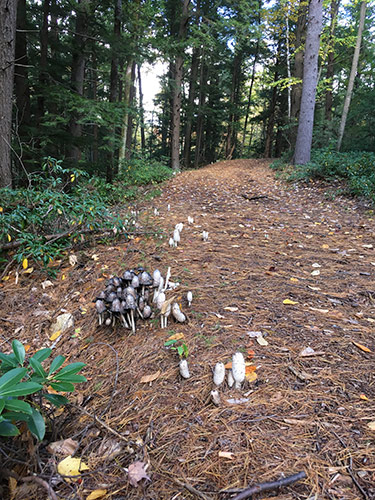
Figure 1.
Coprinus comatus fruiting along a snowmobile
path in New Hampshire in October. Photo © Gary Emberger.
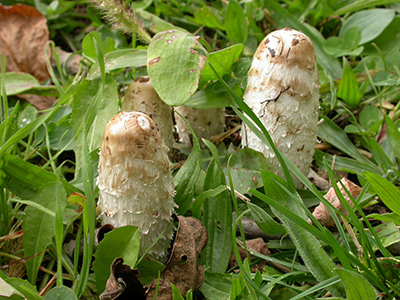
Figure 2. Grassy areas are also a very common habitat for
Coprinus comatus. Photo © Gary Emberger.
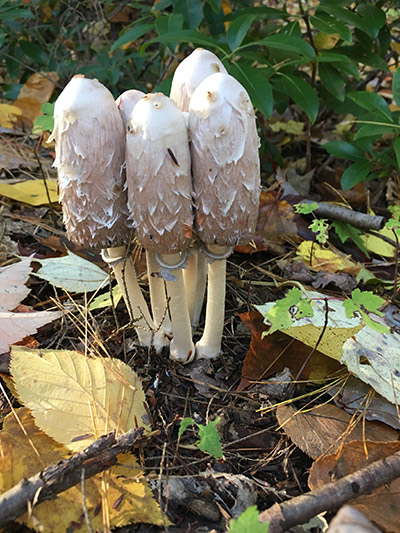
Figure 3. Coprinus comatus often occurs in clusters. Note the
rings on the stipes just below the caps.
Photo © Gary Emberger.
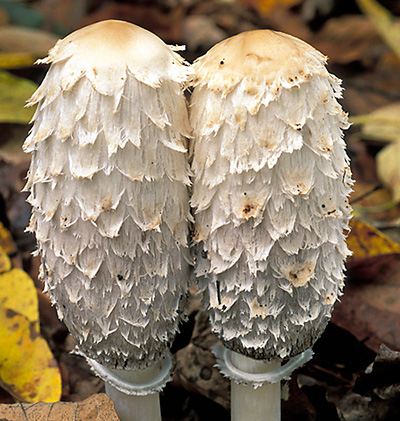
Figure 4.
The abundant scales covering the young, cylindrical
caps give rise to the common name Shaggy Mane.
Photo © Fred Habegger.
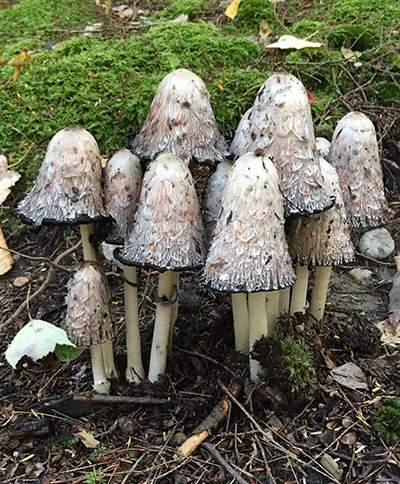
Figure 5.
The black edges of the caps reveal that the gills are
liquifying. The
process of gill auto-digestion proceeds from the
lower
cap margin to the top of the stipe.
Photo © Gary Emberger.
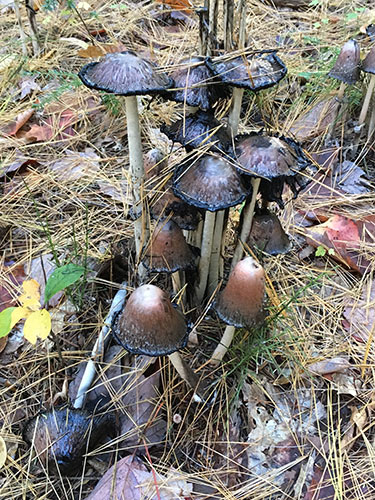
Figure 6. The caps expand, becoming more bell-shaped, as
the gills deliquesce.
Photo © Gary Emberger.
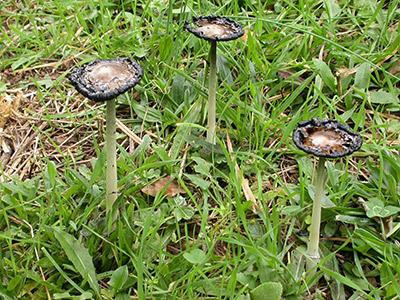
Figure 7.
By the end of the process of spore release and gill
digestion, not much remains of the once sizable caps.
Photo © Gary Emberger.
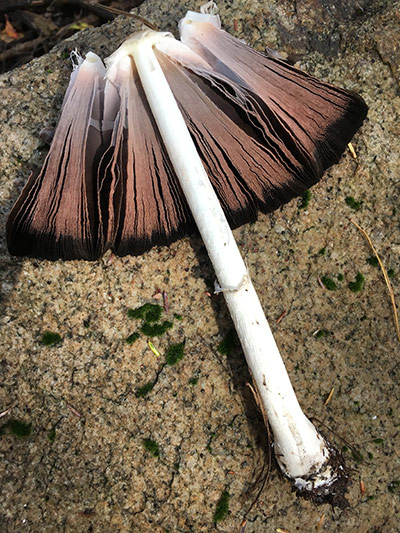
Figure 8.
The cap of this specimen was split open to reveal
the
upper stipe and the very crowded gills.
The young gills are white
and go through several color changes as the spores maturing on
them
become black.
Photo © Gary Emberger.
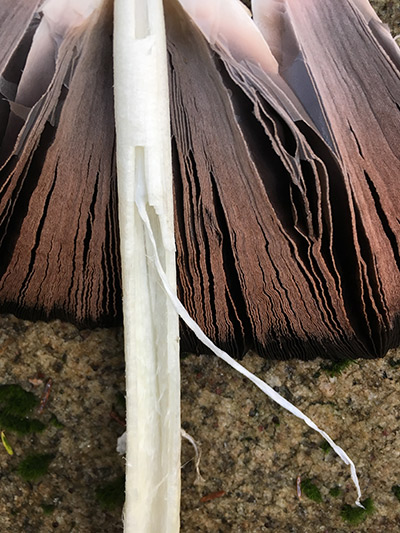
Figure 9.
The stipe of this specimen was broken open to reveal
the cordlike strand of
fibers running through the hollow center.
For this photograph, the strand was lifted out and displaced to
the right of the stipe. Photo © Gary Emberger.